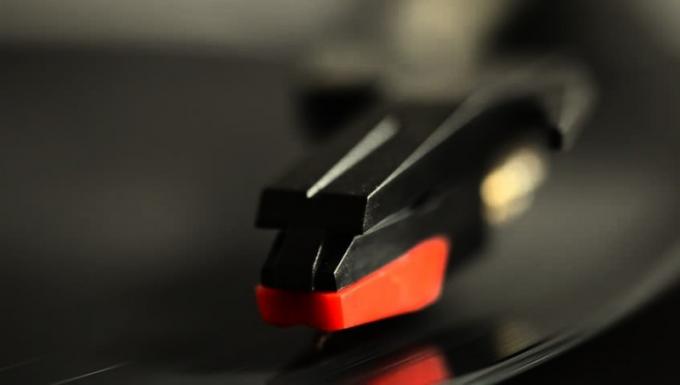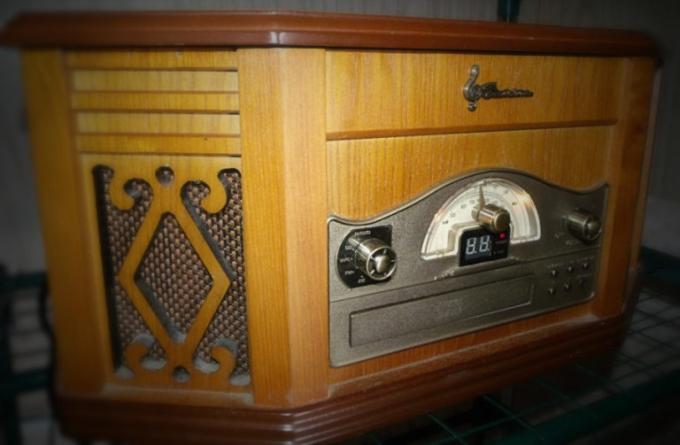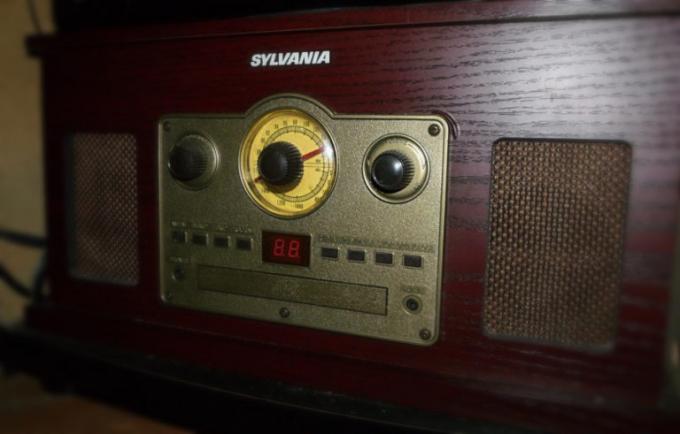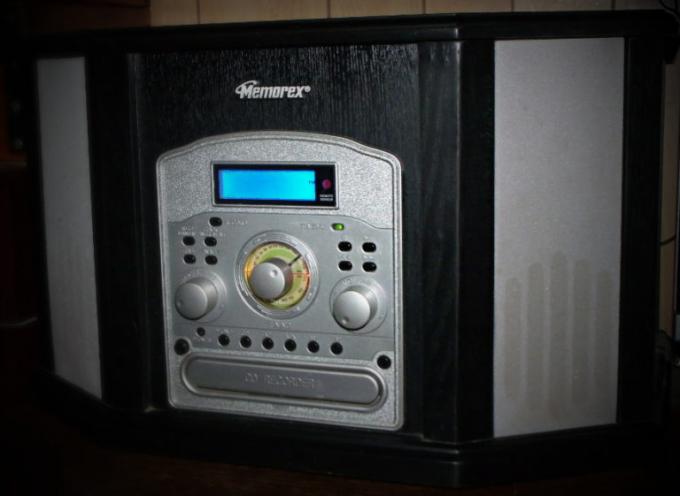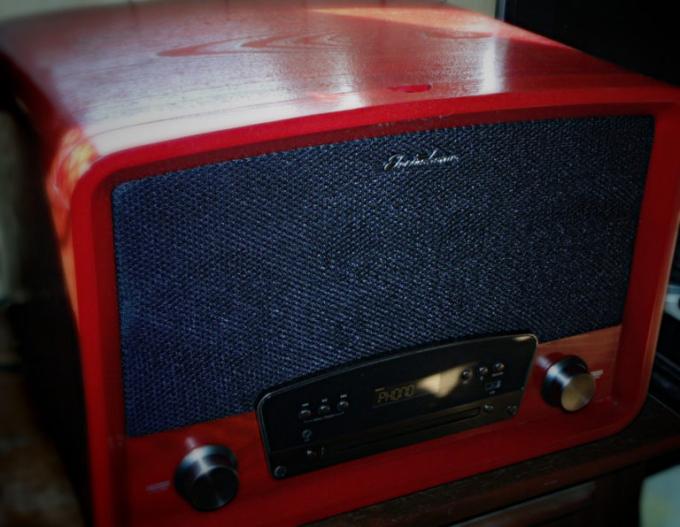It’s kind of amusing how, even though you never intended to collect something, you wind up with a collection of it anyway. This is what happened with me and those all-in-one cabinet turntables (aka nostalgia stereos) that first hit the market in the early 2000s. We started with one, way back in 2004 and now, we find ourselves with four of them, which we really enjoy having and listening to on a regular basis.
I don’t really know why I particularly like these compact stereo systems. I know that they are not made with the highest quality parts and components, and that there are much better sounding audio equipment available on the market (at a much higher price, however). But, there’s just something about their eccentric designs and wood veneers that resonate with me. It most likely has to do with the era in which I was raised and the fond memories I have of listening to music on our family hi-fi console. It was this relatively large piece of furniture, made of solid wood and housed an Electrohome turntable and vacuum tube radio.
They don’t make consoles like that anymore, and I really wish they would. So, I guess in my mind, these compact all-in-one turntables are the closest thing to that beautiful stereo from my youth.
And you know, even though they’re not made to the highest standards, you can still get some pretty good sound out of them, with a little bit of tweaking and fine-tuning. We also find them very convenient, as our music collection includes vinyl LPs, compact cassettes, and some CDs. So, having a compact unit that can play all of our formats in one space is valuable to us.
We really enjoy using the ones we have in our collection and we like the aesthetics they bring to our living space. They’re more than just a record player (or cassette player or radio), they’re a stylish piece of furniture. We typically find ourselves rotating them, from time to time, as we really don’t have the space to put them all out on display at once, but want to enjoy each of them.
Another benefit of these all-in-one consoles, is that they provide you with hours of listening pleasure for very little power, when compared to other forms of electronic entertainment. On average, these units consume anywhere between 20 to 50 watts, where as modern A/V receivers require anything from 150 to 200 watts at the minimum. Therefore, for a society that is so concerned about global energy production, consumption and conservation, then these consoles are ideal. And since we live “off the grid” for the most part, these all-in-one stereos are easily powered by our solar powered generator.
The first one we bought was an Emerson NR303TT, which we saw in the Sears catalog, back in 2004. I bought it as a Christmas present for my wife. It was the first one of these modern day all-in-one turntables we ever saw. It reminded us so much of the old consoles from our childhood, and it even came with it’s own matching wooden table/stand. It was lovely, and still is.
I can’t say for sure if Emerson was responsible for the revival of these turntables and began this trend of stylized wooden all-in-one stereos, but it’s the first one I can remember seeing on the market. Not long after that Christmas, we started seeing more of these consoles being made by many different A/V companies.bbIf you happen to know how this all-in-one (CD, cassette, radio, record LP) console market got started, and by who, let me know in the comments below.
Once we got our Emerson, we also started to get into collecting LPs again; something neither of us had done for many years. Luckily we lived in a city at the time that had a couple of second hand record stores, which we frequently visited.
Although the Emerson didn’t have a lot of bass to the sound, it still was pretty good overall. We dramatically improved the sound by replacing the stylus, that came with unit, with a higher quality one. However, it took some time for us to find a distributor that had such things, as the market for them was brand new and replacement parts weren’t as easy to find as they are today. Another thing we picked up for it was a rubber mat for the turntable platter. This helps with vibrations and needle tracking. These little improvements really add up and do improve the sound quality of these units.
The only real problem we have with playback on the Emerson is that the toner arm is a little light. With some LPs, if the grooves are too “tight” (or close together) on a track, the stylus tends to skip out of the groove. Apart from this, we’re very please with this stylish nostalgia stereo. The turntable features a auto return mechanism when the end of the album is reached, and has a very gentle lowering mechanism for the tonearm. In fact, it’s the most gentle I’ve ever seen; it takes a full four to five seconds for the stylus to drop down onto the record, when lowered.
The playback for the CD, cassette tape, and radio all sound great with a good range of sound coming from the 3″, 2W (just a guess) speakers.
The second unit we bought was our Sylvania SRCD838, back in 2014. We found this one on-line at Forest City Surplus, a surplus discount store located in London, Ontario, Canada. They were selling it at a very reduced price, which we just couldn’t pass up. We bought this one to put in our 5th wheel RV (which we had at the time).
The Sylvania’s turntable doesn’t produce as rich a sound as the Emerson, but it’s still pretty good. Although, lately I’ve noticed that there’s a slight speed variation in the turntable. It may need some lubrication. (Update: I have since put a new drive belt on the turntable and it fixed the wow and flutter. Sounds much better now.)
When playing from the other sources, the Sylvania’s sound has a little bit more bass than the Emerson. But, the cabinet is a little deeper, which probably helps with that. Like the Emerson, it can play records, cassettes, CDs, and has an AM/FM tuner radio. Unlike the Emerson, however, it also has composite audio out jacks on the back and has an auxiliary in port. So, if we wanted to, we can plug in an MP3 player or something like that to play through the console’s speakers.
The tonearm does not have an auto return function, it just shuts the player off when the end of the album is reached. Also, the tonearm lifter has no “soft touch” feature. It will raise or lower at the speed that you lift and lower it, so you have to be careful of how fast you lower the lever.
Just like on the Emerson, we upgraded the stylus, which greatly improved the playback. And, the toner arm seems to be balanced a little better, as it doesn’t have the same issue with “tight” grooves. Overall, if you remove the current performance of the turntable, the sound is just slightly better than the Emerson, with a bit more bass coming from the 3″, 2W speakers.
Our third addition to the collection is our Memorex 9290BMMO, which we found at a garage sale for $20. The owner sold it to us as “non functional” because the record player didn’t produce any sound when played. Turns out that the needle on the stylus got bent. So we just replaced it and it plays perfectly fine, now.
This unit has very nice sound to it. Along with the larger front speakers, it also has “sub-woofer” holes on the back of the cabinet, which help produce some nice bass. But, whether or not it’s the best sounding will be up to your personal preferences. When compared to the other stereos in our collection, it does have the second best bass output, but can sound a little muffled at times, as the higher pitched sounds are not as prominent. So, if you’re listening to classical music, you’ll hear the nice rich sounds of the woods and the percussion, but will lose some on the brass and strings. In comparison, they are much better defined on the Emerson.
The Memorex can do everything that the Sylvania can do, but it also has the ability to record music to the CD, in standard CD format. It’s a little cumbersome to do at first, but once you’ve got the hang of the process, it’s pretty easy. The problem I have with it is the digital controllers on the dials. I guess, over time, they’ve gotten a little dirty or something, as they tend to jump around a bit when I’m adjusting the volume or the recording levels (for the CD burner). I much prefer the analog knob controls, which are found on the Sylvania and Emerson units. I’m guessing that there was a remote control for this console as well, but wasn’t present when we bought it at the garage sale.
Something else these three systems have in common are their cabinets. They are all MDF (medium-density fiberboard) with real wood veneer, and I have to say that the veneers used appear to be of a high quality. They are certainly not the kind of “paper” veneer you may find on other cheaply made MDF or particle board products (like bookshelves you typically find at a department store). The veneer on these stereos feels very “real wood-like” with raised wood grain and nice rich color. Every once in a while, I’ll give our all-in-ones a nice rubdown with baby oil to keep the veneer looking their best.
The latest all-in-one stereo we added to our collection was the Electrohome Kingston, in 2020. This is about as best all-in-one stereo turntable I’ve ever heard. I’m going to give this stereo an entry all to itself, so come back for that in my next blog entry.
[tag]turntable, sylvania, emerson, collection, review, memorex[/tag]

